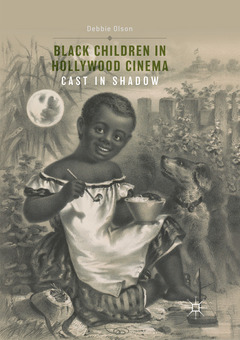Description
Black Children in Hollywood Cinema, Softcover reprint of the original 1st ed. 2017
Cast in Shadow
Author: Olson Debbie
Language: English
Publication date: 08-2018
Support: Print on demand
Publication date: 03-2017
Support: Print on demand
Description
/li>Contents
/li>Biography
/li>Comment
/li>
This book explores cultural conceptions of the child and the cinematic absence of black children from contemporary Hollywood film. Debbie Olson argues that within the discourse of children?s studies and film scholarship in relation to the conception of ?the child,? there is often little to no distinction among children by race?the ?child? is most often discussed as a universal entity, as the embodiment of all things not adult, not (sexually) corrupt. Discussions about children of color among scholars often take place within contexts such as crime, drugs, urbanization, poverty, or lack of education that tend to reinforce historically stereotypical beliefs about African Americans. Olson looks at historical conceptions of childhood within scholarly discourse, the child character in popular film and what space the black child (both African and African American) occupies within that ideal.
Debbie Olson, PhD, is Assistant Professor of English at Missouri Valley College, USA. She is Editor-in-Chief of Red Feather Journal: An International Journal of Children in Popular Culture (www.redfeatherjournal.org), and editor of Children in the Films of Alfred Hitchcock (2014) and The Child in Post-apocalyptic Cinema (2015). She is currently working on her next book, On Innocence.

